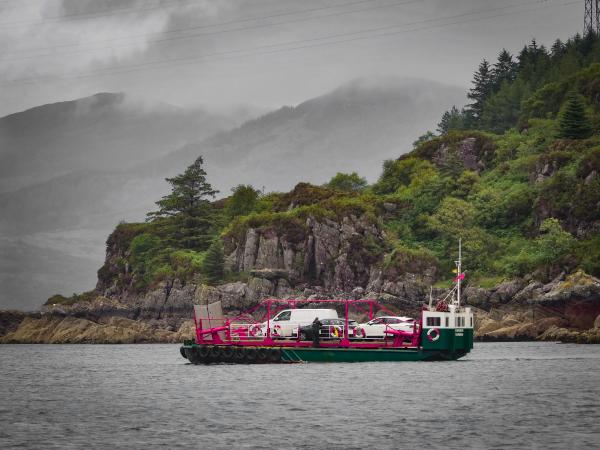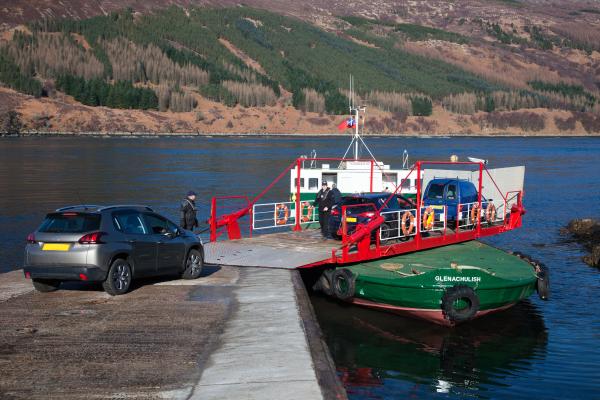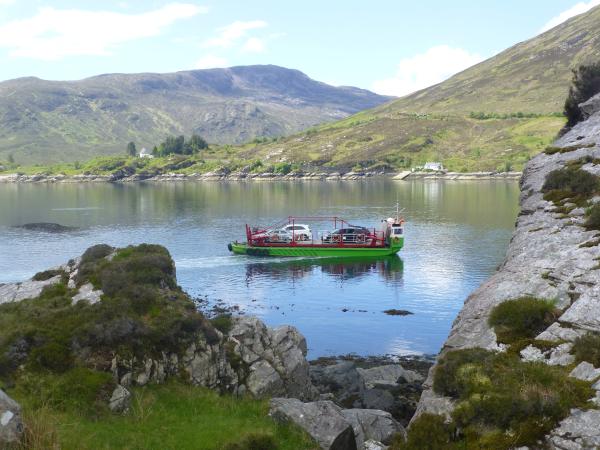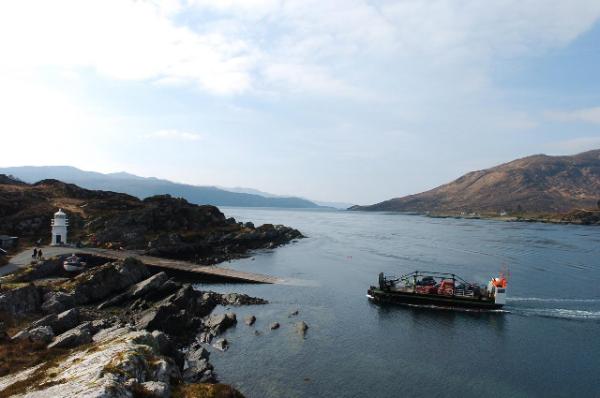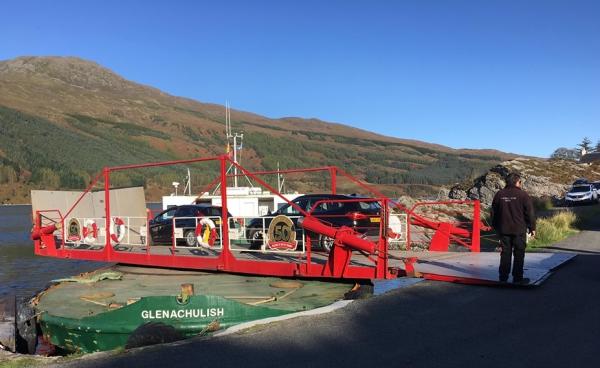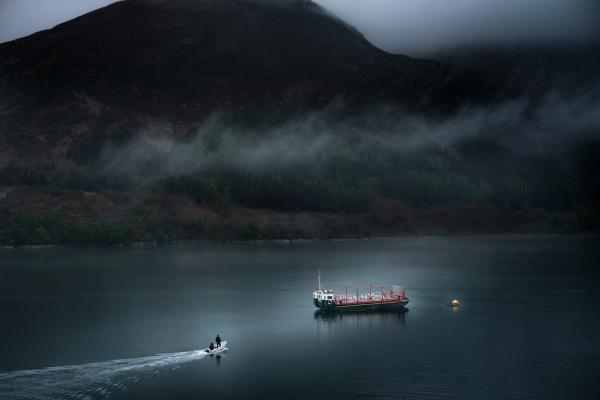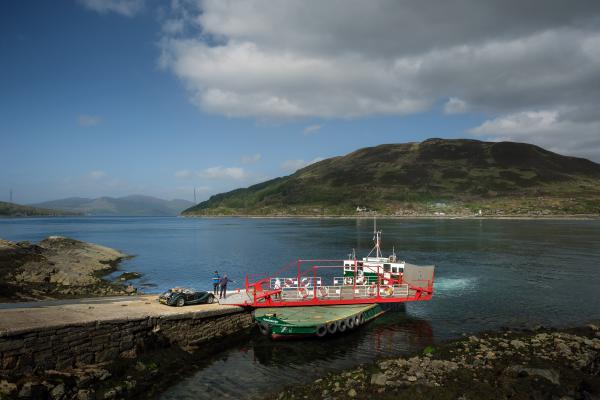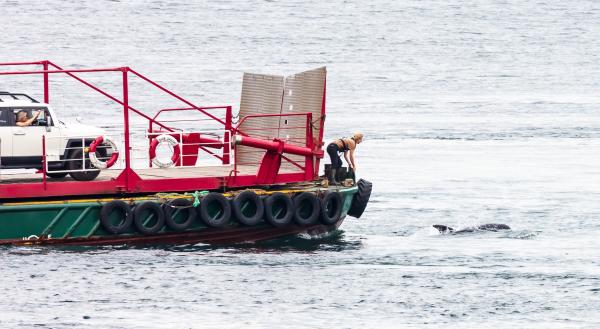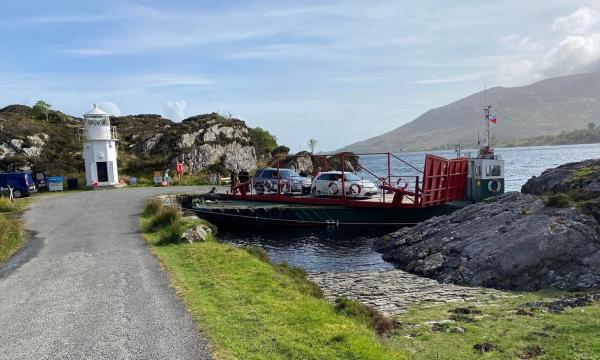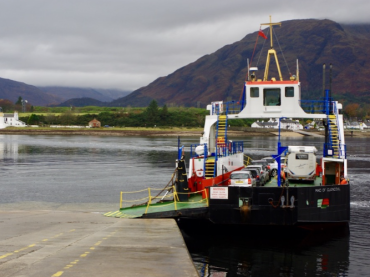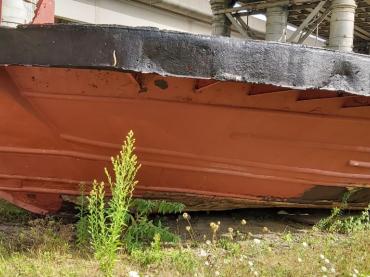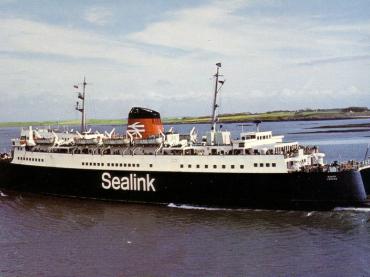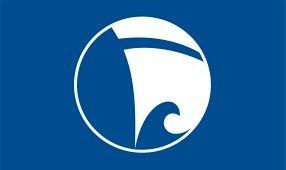
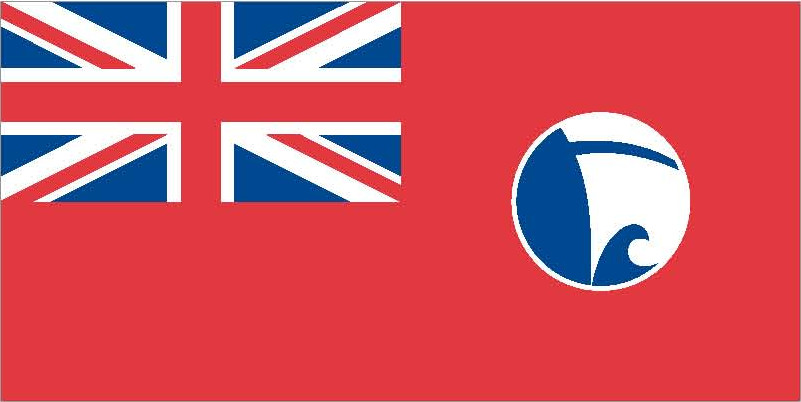
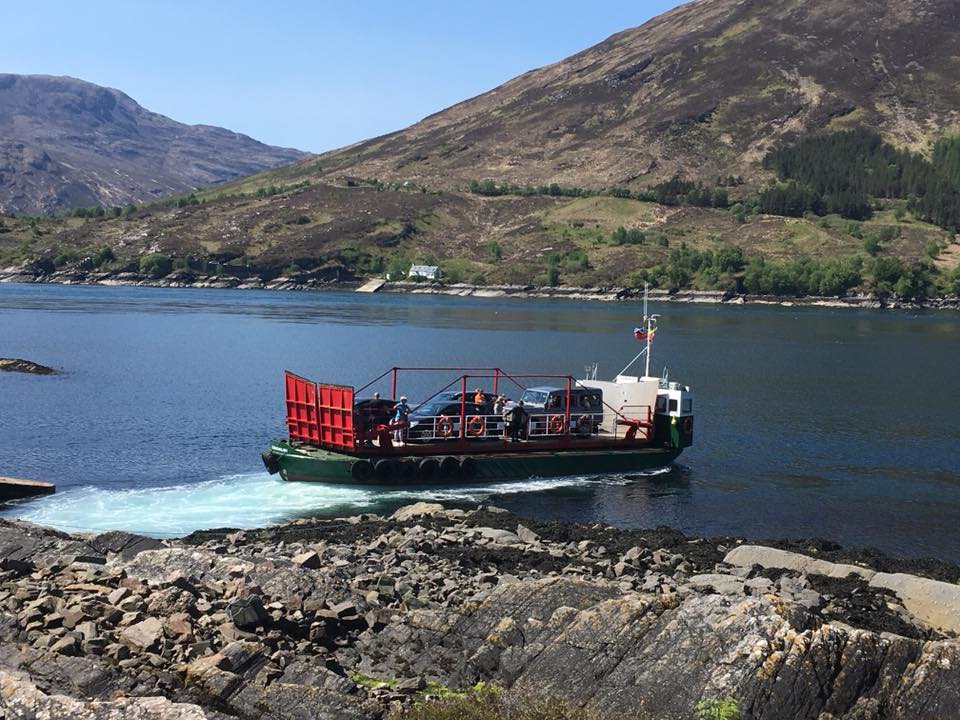
Details
Construction
Dimensions
History
MV GLENACHULISH is the last manually operated turntable ferry in the world. She is in regular service between Easter and October and is maintained by the Isle of Skye Ferry Community Interest Company, which holds a Loadline Exemption certificate from the MCA. In 2010 the company spent £60,000 overhauling the keel and hull.
Once a common sight throughout the Highlands, 'wee ferries' were the road links before the building of bridges. The GLENACHULISH ferry was built in 1969 to work the crossing at the head of Loch Leven between Ballachulish (Argyll) and North Ballachulish (Inverness-shire) on the main (A82) west coast road between Glasgow and Inverness. The GLENACHULISH was in service until the Ballachulish ferry closed in December 1975.
In 1983 she came to Glenelg, the closest landmass to the Isle of Skye, to ply the Kyle Rhea Narrows, the oldest and fastest ferry route to the island. This is where Vikings crossed the surging straits coping with the eight knot current, and drovers brought herds of Hebridean black cattle to swim across from Kylerhea on Skye to Glenelg and continue their way south to market - a head count of some 8,000 beasts per year. There has been a car ferry service here since 1934, although there was an extended break through the Second World War when access to local waters was restricted due to their importance as a centre for naval operations.
In 2006 when the owner operator retired a community interest company was set up to purchase and operate the ferry. The Isle of Skye Ferry CIC is a Social Enterprise set up to safeguard the historic ferry route from Glenelg to Skye. The company works to secure this economic lifeline in the interest of the local community.
In June 2022, MV GLENACHULISH was awarded the title of NHS-UK's Operational Flagship of the Year.
Significance
1. What is the vessel’s ability to demonstrate history in her physical fabric? Evidence for designs, functions, techniques, processes, styles, customs and habits or uses and associations in relation to events and people. How early, intact or rare these features are may impact on significance.
MV GLENACHULISH is a manually operated turntable ferry incorporating the innovation and development of a drive on, drive off (Ro-Ro) principle which began at the start of the 20th century. This ultimately led to the use of a platform which could be rotated to the fore and aft position for passage, and then swung athwartships to disembark the vehicle and take on another for the return passage. This innovation, peculiar to the region, was continuously developed, with GLENACHULISH exhibiting its refinement over half a century, culminating with her build in 1969.
GLENACHULISH originally berthed port side-to, so two thirds of her port side was fitted with ⅜”(9.5mm) steel whereas the rest of the hull is ¼”(6.3mm). There has been some thinning of the original plate in up to 80% of the steelwork which has been replaced where necessary with 6mm or 9mm marine grade plate. The starboard side, where she now berths, has been strengthened with 50mm round bar at the chine. The boxed oak fixed fendering has been replaced with welded half-pipe but the vessel still sports the traditional road tyre fendering down the sides.
The wheelhouse has been completely replaced to the original design but with larger windows to improve the already restricted visibility for the skippers. The electrics have been rewired, maintaining the 24v DC system but separating the ‘start’ and ‘service’ battery banks and adding an additional alternator. Instrumentation was added to the Starboard, now primary, steering position duplicating that already on the Port. Ship’s spoked wheels, like the originals, are restored to the conning positions but they manually drive hydraulic pumps to the rudder head ram as opposed to the original chain-link driven system. The ferry now includes some electronic navigation aids and can collect fares by ‘contactless’ payment via Broadband.
The vessel’s outward appearance, functionality and main machinery remain largely unchanged. Her hull form and construction are as built and she still retains her original Kelvin model T6 engine with some adaption and upgrades to meet MCA coding requirements. One significant change resulting from her current operational location has been the running of her exhaust out the vessel stern rather than the starboard side as was originally the case. This ensures passengers and crew are not impacted by the exhaust fumes. Addition fuel filtering has also been installed, along with the diesel additives are needed to operate on modern fuels.
2. What are the vessel’s associational links for which there is no physical evidence? Associations with people or places. Off-ship research.
MV GLENACHULISH has national significance as the last remaining manually operated turntable ferry once common around the Western Highlands & Islands of Scotland. She was commissioned by and built for the Ballachulish Ferry Company Ltd by the Ailsa Shipbuilding Company of Troon. Constructed specifically for the narrow crossing at the mouth of Loch Leven to the South of Fort William, she served at Ballachulish until 1975 and then became the relief vessel at Corran, Kessock, and Kylesku giving her strong local associations. Like her sister vessels across the Western Highlands and Islands, she was manned by a crew of up to three, typically men from the local community on either side of the crossing. These ‘ferry folk’ remain a part of Scottish history, being well-known and recalled by their respective communities as a focal point for island and mainland life.
MV GLENACHULISH is an important representative of life in the Western Isles before the development of road bridges. Operating at Glenelg since 1982, she marks the original access point from the Hebrides to the Scottish mainland. The two slipways used by MV GLENACHULISH today were designed by the famous engineer Thomas Telford. The ferry has become a successfully run heritage tourist attraction in the hands of the Isle of Skye Ferry Community Interest Company (IoSFCIC), welcoming over 35,000 visitors a year, as well as providing a valuable transport service. GLENACHULISH has featured on screen in both movies and local interest / travel documentaries. She was recorded on the National Register of Historic Vessels in 2019 and, in 2022, was selected as one of the National Historic Ships UK Flagships of the Year.
3. How does the vessel’s shape or form combine and contribute to her function? Overall aesthetic impact of the vessel, her lines, material she was built from and her setting. Does she remain in her working environment?
MV GLENACHULISH was built as a manually operated turntable ferry, designed to load at any state of tide and prevent motorists from needing to reverse. Working in challenging waters, her propeller turned anti-clockwise when going astern to assist the ferryman when berthing port side-to at Ballachulish. Through a “paddle wheel effect”, this kicked the stern to port thus aiding the alongside manouvre. Whilst minor adaptations have been made to the vessel’s steel fabric, as highlighted in the above, her outward appearance and functionality remain as built. Due to the increased weight of modern vehicles, some adaptations have been made. The wire braces on the cantilever turntable have been replaced with flat bar to improve strength; the gates have been replaced but to the original design; and the ramps have been replaced with longer, angled steel ramps to accommodate heavier cars with much lower road clearance. The 63 pine turntable planks have also been replaced with thicker (52mm) stronger larch. Now returned to her original dark green livery, she looks fit for purpose and as such, she can be considered an aesthetically pleasing sight against the dramatic backdrop of the Kylerhea Narrows. MV GLENACHULISH continues to operate as she was originally intended and provides a vehicle and passenger ferry service between the Highlands and Isle of Skye.
Author: NHS-UK team, March 2024
Key dates
-
1969
Vessel built by Ferugson Ailsa Ltd in Troon, Scotland
-
1983
Moved from operating at the head of Loch Leven to Glenelg
-
2006
Upon the retirement of her owner, Isle of Skye Ferry Community Interest Company was formed by local residents to buy the ferry and run the service
-
2022
Received the 2022 Operational Flagship of the Year Award from National Historic Ships UK
Grants
-
Feb 2024
The Strategic Developement Fund awarded a grant of £1000 towards replacement of the bilge suction valves, supported by Winter & Co Marine Ltd
Own this vessel?
If you are the owner of this vessel and would like to provide more details or updated information, please contact info@nationalhistoricships.org.uk

